2024 Kia Sorento X-Pro First Drive Review: Updated midsizer gets tougher and techier

TABERNASH, Colo. — It seems not very long ago that we began testing the fourth-generation Kia Sorento, which debuted for the 2021 model year. Fast-forward to 2024, and its sporty good looks, up-to-date technology and the time-warping effects of a pandemic combine to make this smaller-than-a-Telluride three-row SUV feeling youthful. But since its launch, Kia has updated its lineup with more off-road-capable (X-Pro) versions of the Telluride and Sportage to complement the off-road-styled X-Line trims. While the X-Pro had skipped over the Sorento in the model lineup, that changes with a mid-cycle update, complete with X-Pro treatment, for the 2024 Kia Sorento. Talk about fresh.
The gas-only Sorento models get significant updates in styling and technology for 2024, with the hybrid versions getting comparable changes for 2025. We’ll be sticking with the non-hybrid versions today. Outside, the 2024 Sorento gets a new, strikingly larger and more upright grille and vertical headlights, putting an even sportier face on a model that has already bolder than past generations. Inside, the cabin has been refreshed and cleaned up, with its slick, curved dual-screen display taking center stage. The horizontal look of the dash is less cluttered, and accentuates the cabin’s width. The tech is underpinned by Kia’s new Connected Car Navigation Cockpit (ccNC) operating system, capable of over-the-air updates, with standard wireless Apple CarPlay and Android Auto if the genuinely attractive and user-friendly native interface isn’t to your liking. It also gets updated driver assistance tech, with the availability of Kia’s Highway Driving Assist 2 with lane-change assist and machine learning (allowing the adaptive cruise control to also adapt to your driving style over time).
Interestingly, every all-wheel-drive Sorento but one (the Sorento S) is now either an X-Line and X-Pro, with the latter exclusive to the range-topping SX Prestige. That means the all-wheel-drive versions of the EX and SX automatically come with the X-Line’s requisite black-out trim, raised roof rails, 20-inch gloss black wheels and extra ground clearance along with its all-wheel-drive system that includes a Snow drive mode and center locking differential.
The X-Pro goes even further, adding a more rugged and capable option to the Sorento family for a reasonably $1,000 premium over the X-Line SX Prestige. The biggest difference is in the shoes it wears: 17-inch matte black alloy wheels wrapped in BFGoodrich all-terrain tires. It also boasts 4,500 pounds of towing capacity thanks to an updated radiator design and better cooling. That’s actually 500 pounds more than originally announced for the X-Pro. Senior Product Manager Mark Savino says Kia “found” 500 extra pounds compared to the research and development team’s earlier, “conservative” estimate. Of course, it also gets unique badging and “X-Pro” embossed front-seat headrests if the wheel/tire package weren’t enough to make it stand out from the lesser X-Line.
But why do away with any lower-riding, non-“X” version of the all-wheel-drive Sorento? Well, because the X-Line and X-Pro are what the customers want, Kia says. These trims make up about 40% of sales across Sportage and Telluride, and why wouldn’t the Sorento, which slots neatly between them, be any different? In addition, SX and SX Prestige made up about 30% of Sorento sales. Customers “are looking for a pretty richly contented, high-spec, high-trim Sorento,” said Savino. And alongside family-friendliness and comfort, Kia’s research shows adventure is the third piece of the “mindset” puzzle when it comes to Sorento owners, according to Kia marketing VP Russel Wager, and the X-Pro aims to offer them “three rows of unstoppable.”
Standard in all Sorentos but the bottom LX and S trims is a turbocharged 2.5-liter inline-four producing 281 horsepower and a meaty 311 pound-feet of torque. This turbo powertrain sends power to the wheels through an eight-speed dual-clutch automatic transmission. Interestingly, the X-Pro’s standard all-terrains don’t punish fuel economy, as it receives the same EPA rating as the X-Lines at 20 miles per gallon city, 27 mpg highway and 23 mpg combined.
The base, naturally aspirated 2.5-liter is 2-3 mpg combined better, but has only 191 hp and a glacial 0-60 time of around 10 seconds. That basically makes the turbo a must, especially when high in the Rocky Mountains on roads straddling the Continental Divide. Hammering the accelerator from a stop, the Sorento hesitated for just a moment in the thin air, but then quickly sprang to life as the turbo spooled up, forcing a fresh, compressed breath into the engine, resulting in an ample amount of power to climb through the winding mountain passes. The eight-speed DCT worked quickly and surprisingly smoothly, doing its best to make us forget it was there without showcasing the herky-jerkiness you might expect from a DCT.
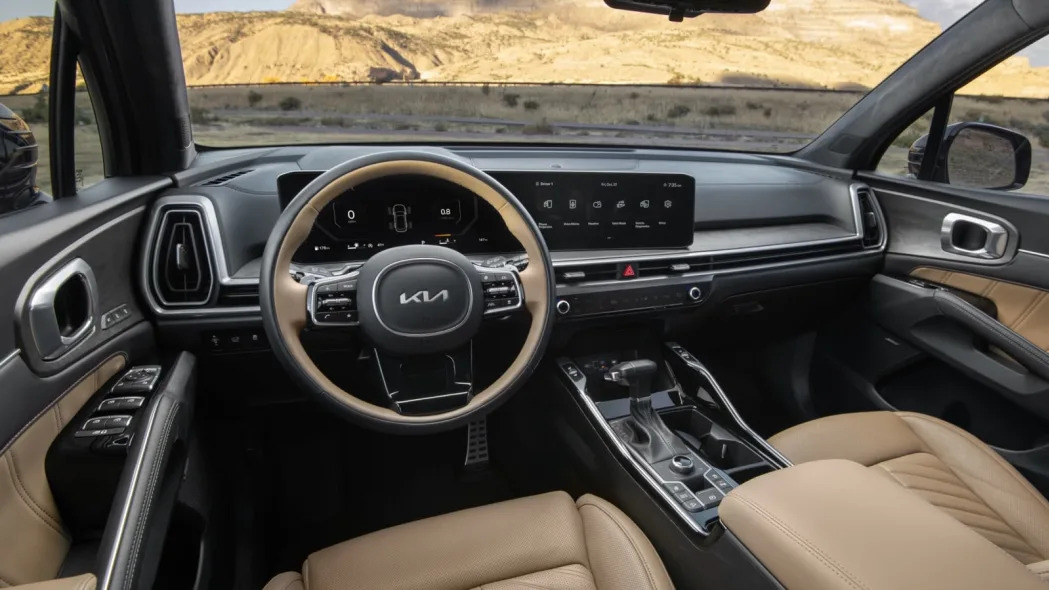
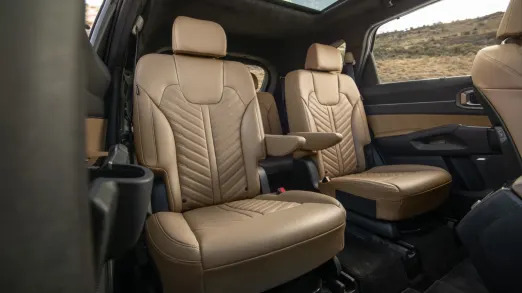
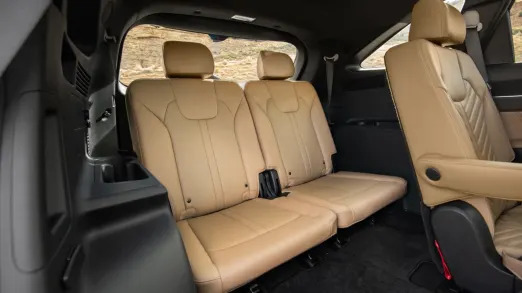
The Sorento’s various drive modes were also welcome in Colorado’s lofty and varied terrain. Driving the flat highways and city streets, we’d leave it in Normal or Smart. Snow mode made for a good balance and traction when we did encounter the rare bit of white stuff on the road (sadly, our drive time in Colorado took place between snowstorms, when the roads were mostly clear). Sport mode was great not only for when we wanted to drive a little more enthusiastically, but it also served to keep the transmission in the optimal gear and the revs suitably high as we transitioned from hill to hill. The paddle shifters also helped reduce brake use on declines, but the subsequent gearing didn’t offer quite enough engine braking.
More leisurely highway driving provided the opportunity to try out the Sorento’s Highway Driving Assist 2 system. As in other Hyundai/Kia/Genesis vehicles, this advanced adaptive cruise control worked well, maintaining a comfortable distance when at its closest setting. Through the many, many mountain curves, the lane-centering steering assist did a wonderful job of keeping away from the lane markings, making for a smooth and effortless cruise after an early morning and a long flight. The lane-change assist was surprisingly not annoying, either. The times when we did use it, activated by using the turn signal with cruise control and steering assist on, it was able to gauge a safe spot in the lane next to us and move the Sorento into it without any irritating lingering or sluggishness. It works better than similar systems and we could see using it more as a result.
We had hoped to get the chance to make further testing of the X-Pro’s capabilities, seeing as this is the most capable Sorento. County dirt roads meandering through the mountains that might have been challenging a week or so prior were mostly clear, though, and didn’t give the X-Pro any pause. We’ll be interested to have another go in the X-Pro at some of our favorite sandy trails in Northern Michigan; the steep, sandy hills over Black Mountain seem the proper venue for testing the all-wheel drive, center locking differential and, most of all, the grip of the all-terrain tires.
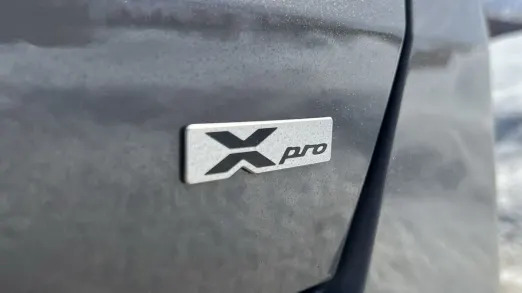
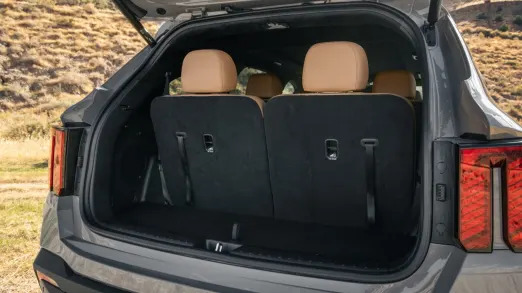
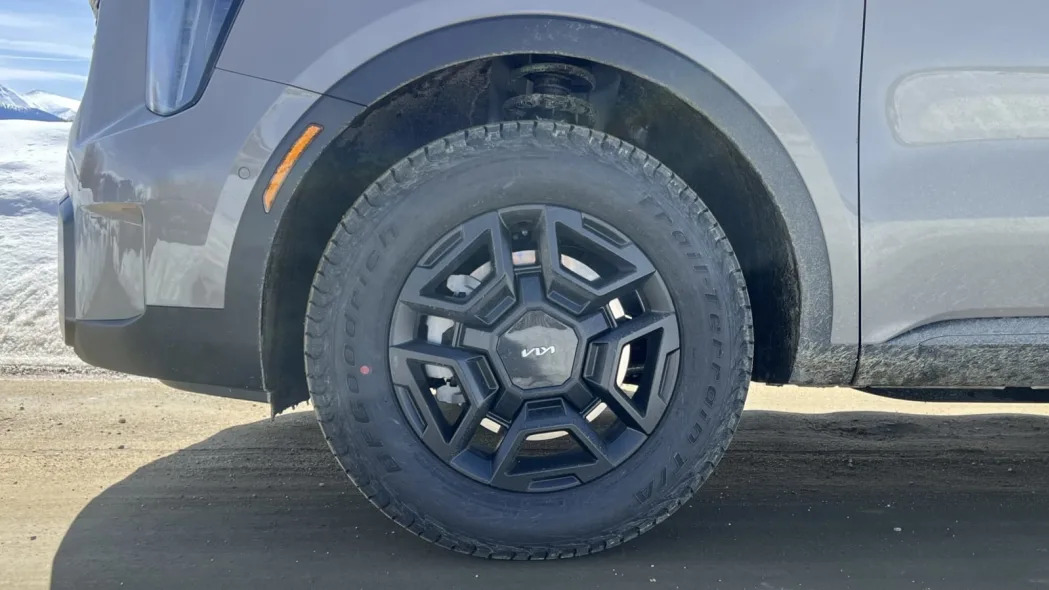
On normal roads, though, those big tires and accompanying taller suspension weren’t as harmful to the ride quality as we expected, considering our experience with the diminished on-road experience of the Telluride in X-Pro trim. The Sorento X-Pro remains a comfortable family hauler with the chunkier rubber between it and the pavement. Road noise wasn’t an issue, nor was carrying on a conversation between rows of seating. Body roll was also well within the realm of acceptable, even when putting heavy cornering loads on the extra sidewall of the BFGoodrich all-terrains. Lateral grip was in ample supply as well. While we’d think a little more about the balance between comfort and capability when considering the Telluride X-Pro, we simply wouldn’t have the same concerns when considering the off-road-ish version of the Sorento.
And we were happy to spend the many hours and miles that we did in the Sorento’s attractive interior. The SX Prestige is impressively packed with content for a vehicle under $50,000. The seats are trimmed in leather, with heat and ventilation for the front row, and heat for the second-row captain’s chairs. There’s a heated steering wheel, as well. The dash trim is plastic, but does a great visual impression of open-pore wood grain (up until you tap on it). The panoramic sunroof is surrounded by a synthetic suede headliner. When the seats and cargo area are full and blocking your rear view, you can switch to the camera-based mirror display. The Bose audio system sounds pretty good, too. While we wouldn’t want to spend much time in the third row — along with the roomier Telluride, the Sorento’s Hyundai Santa Fe mechanical trim has bigger aftmost accommodations — having it there for the rare occasions when you need it is undoubtably a good selling point.
This mid-cycle refresh is an improvement upon an already compelling product, and the X-Pro steals the limelight as the ultimate Sorento. It’s the most capable, most attractive and most feature-rich of the lineup, and it achieves that without sacrificing ride, comfort or drivability. It’s also the most expensive Sorento, but manages to be so at less than $50,000. Not bad for a three-row, family SUV.
Related video:


